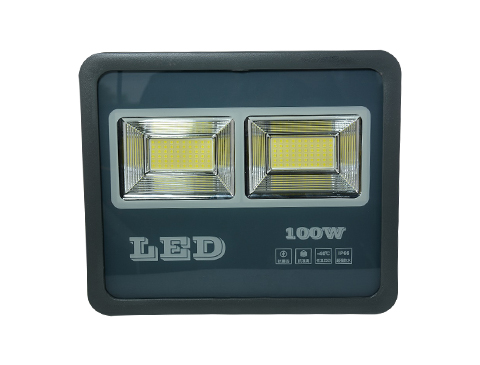

When contacting LED equipment, we sometimes encounter t […]
When contacting LED equipment, we sometimes encounter two different equipment, LED flood light and LED flood light. So what are the differences between them?
LED flood light
LED floodlights are also called spotlights, spotlights, spotlights, etc. They are mainly used for architectural decorative lighting and commercial space lighting. They have heavier decorative components and have round and square shapes. Generally, heat dissipation must be considered, so its appearance is still somewhat different from traditional floodlights.

LED flood light classification
1. Rotation and symmetry
The lamp adopts a rotationally symmetrical reflector, and the symmetry axis of the light source with rotationally symmetrical light distribution is installed along the axis of the reflector. The iso-intensity curves of this kind of lamps are concentric circles.
When this type of spotlight is illuminated by a single lamp, an elliptical spot is obtained on the illuminated surface, and the illuminance is uneven; but when multiple lamps are illuminated, the spots are superimposed on each other, which can produce a satisfactory lighting effect. For example, hundreds of rotationally symmetrical floodlights are commonly used in stadiums, and they are installed on high towers around the stadium to obtain high illumination and high uniformity lighting effects.
2. Two symmetrical plane shapes
There are two symmetry planes in the iso-intensity curve of this type of projector. Most luminaires use symmetrical cylindrical reflectors, and linear light sources are installed along the cylindrical axis.
3. A symmetrical plane line
The iso-intensity curve of lamps has only one symmetry plane (Figure 2). The luminaire adopts an asymmetric cylindrical reflector or a symmetrical cylindrical reflector plus a grid that restricts light. The most typical is the sharp cut-off block retracted light distribution. This kind of light intensity distribution single lamp can obtain a more satisfactory illuminance distribution.
4. Asymmetrical shape
The iso-intensity curve of this type of lamps has no symmetry plane. Mainly use mixed light lamps with different types of light sources with large differences in light intensity distribution and special lamps designed according to the specific lighting requirements of the place of use.
LED flood light characteristics
At present, the commonly used LED flood lights on the market basically use 1W high-power LEDs (each LED element will have a high-efficiency lens made of PMMA, and its main function is to secondarily distribute the light emitted by the LED, which is two Secondary optics), and a few companies have chosen 3W or higher power LEDs because of the good heat dissipation technology. It is suitable for large-scale occasions, lighting, buildings, etc.
What other things need to pay attention to in the flood light?
1. High-purity aluminum reflector, the most accurate beam and the best reflection effect.
2. Symmetrical narrow-angle, wide-angle and asymmetric light distribution systems.
3. The lamp can be replaced with an open-back type, which is easy to maintain.
4. The lamps are all attached with a scale plate to facilitate the adjustment of the irradiation angle.
The LED flood light is controlled by a built-in microchip. In small engineering applications, it can be used without a controller. It can achieve dynamic effects such as gradation, jump, color flashing, random flashing, and gradual alternation. It can also be controlled by DMX. Realize effects such as chasing and scanning.
At present, its main application places are probably these: single buildings, exterior wall lighting of historical buildings, building interior and exterior lighting, indoor local lighting, green landscape lighting, billboard lighting, medical and cultural lighting, bars, Atmosphere lighting in entertainment venues such as dance halls, etc.